Nest boxes and neutrality: Middle East barn owl project seeks Swiss participation
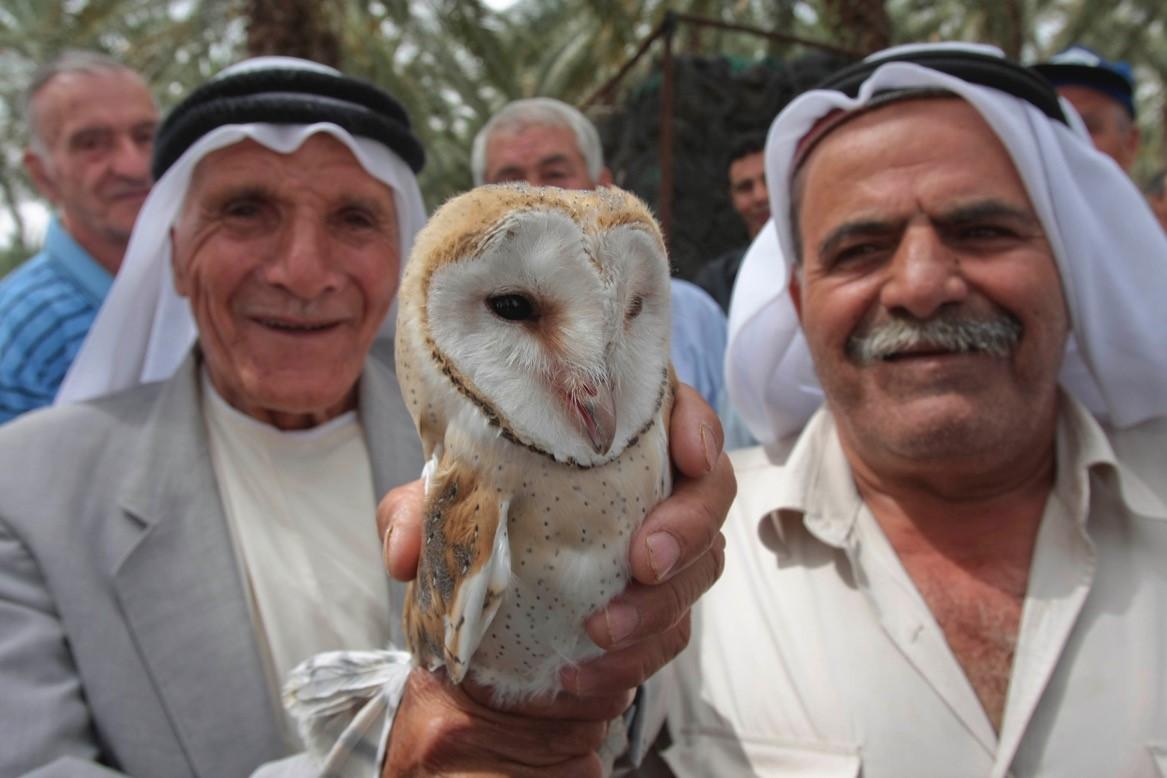
Swiss ornithologist Alexandre Roulin is helping farmers in Jordan, Israel and the Palestinian West Bank fight rodent infestations using avian predators instead of pesticides. The project, which aims to restore the ecosystem and cross-cultural dialogue, hopes Switzerland will play a leading role.
With their distinctive heart-shaped white faces, onyx eyes and honey-coloured wings, barn owlsExternal link can be found on every continent except for Antarctica. Their exceptional vision and hearing and almost soundless flight – not to mention their powerful talons – make them formidable nocturnal hunters.
But these aren’t the only reasons that Alexandre RoulinExternal link has been fascinated by barn owls – scientific name Tyto alba – since he was a teenager.
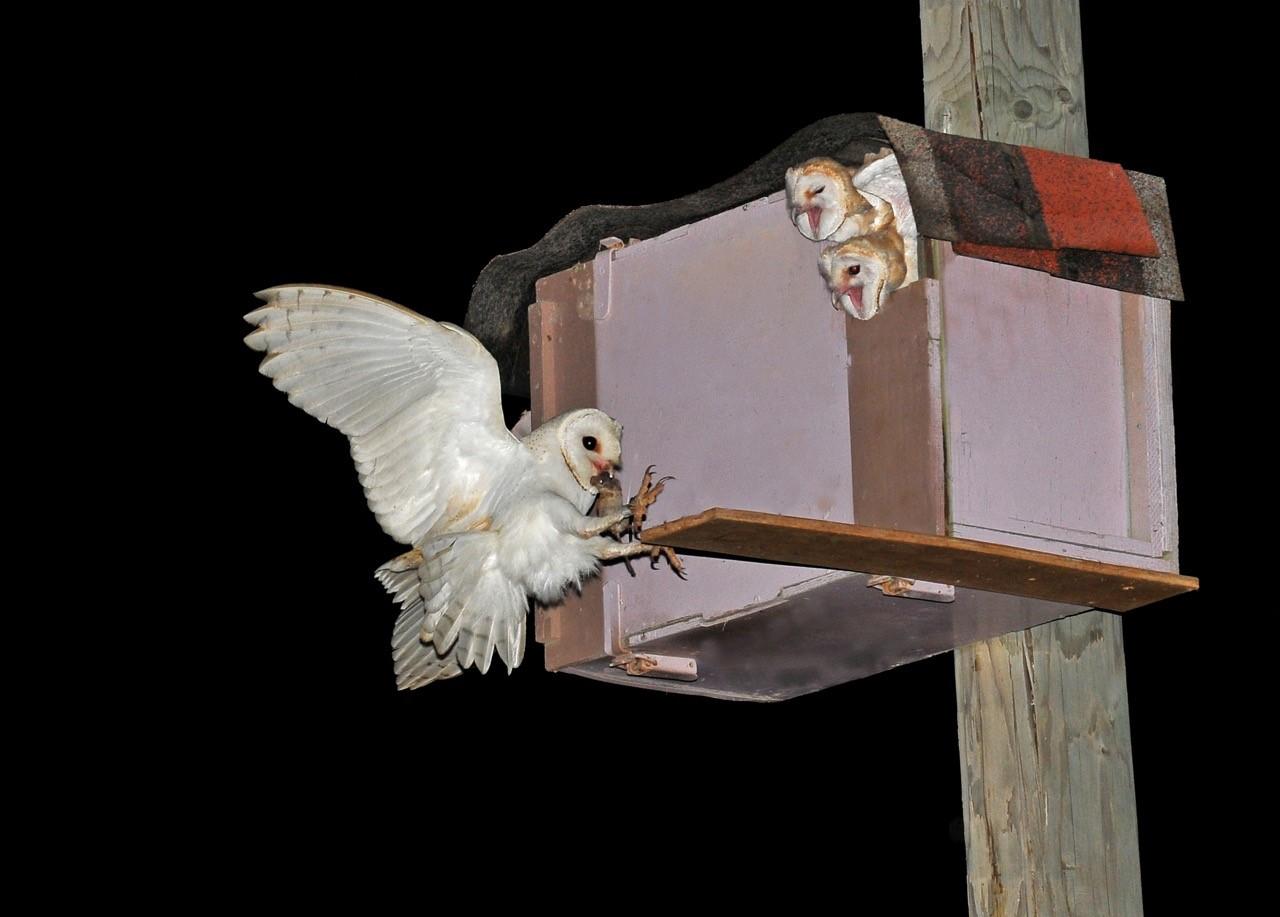
“Eagles kill their siblings like Cain and Abel, but the barn owls help each other,” Roulin told swissinfo.ch in his office at the University of Lausanne, where he is a professor in the department of ecology and evolution. “The barn owl has all the weapons to kill, but when you study these birds more deeply, you realise that the chicks negotiate; they feed and preen each other.”
For Roulin, the fact that barn owls are “killing machines” that are also capable of diplomacy makes them the perfect inspiration for resolving human conflicts.
That’s why he is lending his expertise to a project in the Middle East – dubbed “Barn Owls Know No Boundaries” – that helps farmers install nest boxes in their fields. The goal: to invite these avian predators to help combat infestations of crop-decimating rodents.
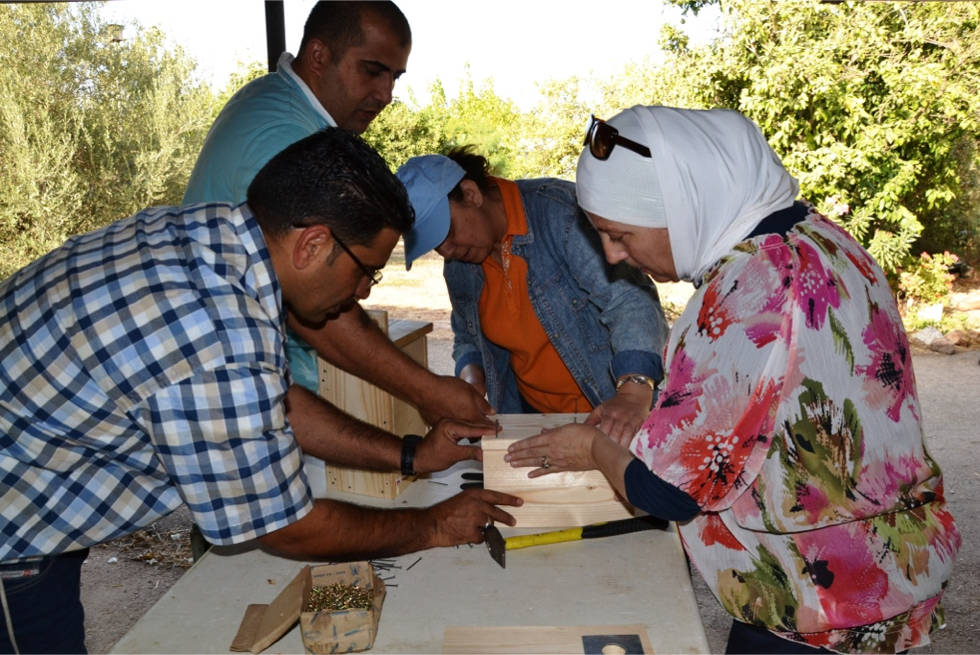
Within a year, a nesting pair of barn owls can produce up to 11 offspring, and consume up to 6,000External link rodents. That might sound like it could wipe out a rodent community, but in arid Middle Eastern countries like Israel, irrigated fields of wheat and alfalfa present a delicious oasis for mice and voles. Rodent populations in these regions have therefore exploded, resulting in major crop damage and losses for farmers.
The rodenticides used to control the problem, however, cause double the trouble in the long term: they pollute soil and water, and kill the very predators – like owls – that help control rodent populations naturally.
Through the Barn Owls project, farmers are encouraged to ditch poisons in favour of nest boxes, which they build themselves and install atop poles in their fields. The boxes are also inviting to nesting kestrels, a type of raptor that feeds on rodents during the daytime, ensuring that the pests are kept in check around the clock.
In a paper published last year in the journal Trends in Ecology and EvolutionExternal link, Roulin and his colleagues reported that as a result of the project, “farmers decreased the spread of pesticides without compromising crop production, [and] the barn owl population size increased.”
A space for Swiss neutrality?
Originally initiated in Israel in the 1980s by Roulin’s colleague Yossi LeshemExternal link, a senior researcher in Tel Aviv University’s department of zoology, the nest box project has spread to include farmers in Jordan and the Palestinian West Bank.
While Roulin’s role began as that of scientific consultant, over time it has evolved into a more diplomatic mission.
“I came to the project in 2009, just because I’m a scientist. But by chance I’m Swiss, and I realised the strength of Switzerland, the neutrality, because people trust us. I noticed directly that we had something to do there,” he says.
In addition to monitoring owl populations and leading nest box-building workshops, Roulin says one of his roles is “to convince Switzerland to participate” in the project, both from an ecological and diplomatic standpoint. Currently, he estimates there are 3,000-4,000 nest boxes in Israel, where a national projectExternal link was launched by Leshem in 2000, with about 220-250 apiece in Jordan and the West Bank.
While some funds to build the boxes were raised in Switzerland, Roulin says more Swiss support is needed to help even out the project’s “asymmetry” between participating countries.
“From a diplomatic view, we need to have this project very strong not only in Israel but also in Jordan and [the West Bank] …the money to help the Jordanians and Palestinians in this project should come from a neutral country such as Switzerland – that’s why it’s so important that Switzerland participates,” Roulin says.
On June 27, Leshem, Roulin, and Jordanian colleague Mansour Abu Rashid of the Amman Center for Peace and Development presented the barn owl project to Swiss President Alain Berset and 150 ambassadors, as part of an annual diplomatic corps meeting in canton Fribourg. According to a foreign affairs ministry press releaseExternal link, Berset cited the owl project as “an example of global involvement on the part of Swiss civil society”.
While the presentation was just a first step toward more formal Swiss involvement, Roulin says that he and his colleagues will continue raising money for Palestine and Jordan’s participation in the project to “reinforce Swiss diplomacy”.
“We are at the beginning of the process, but…in Switzerland we started to [present] the project in November 2015, and now we talk at the very top of the Swiss Confederation, and I think that’s great,” Roulin told swissinfo.ch.
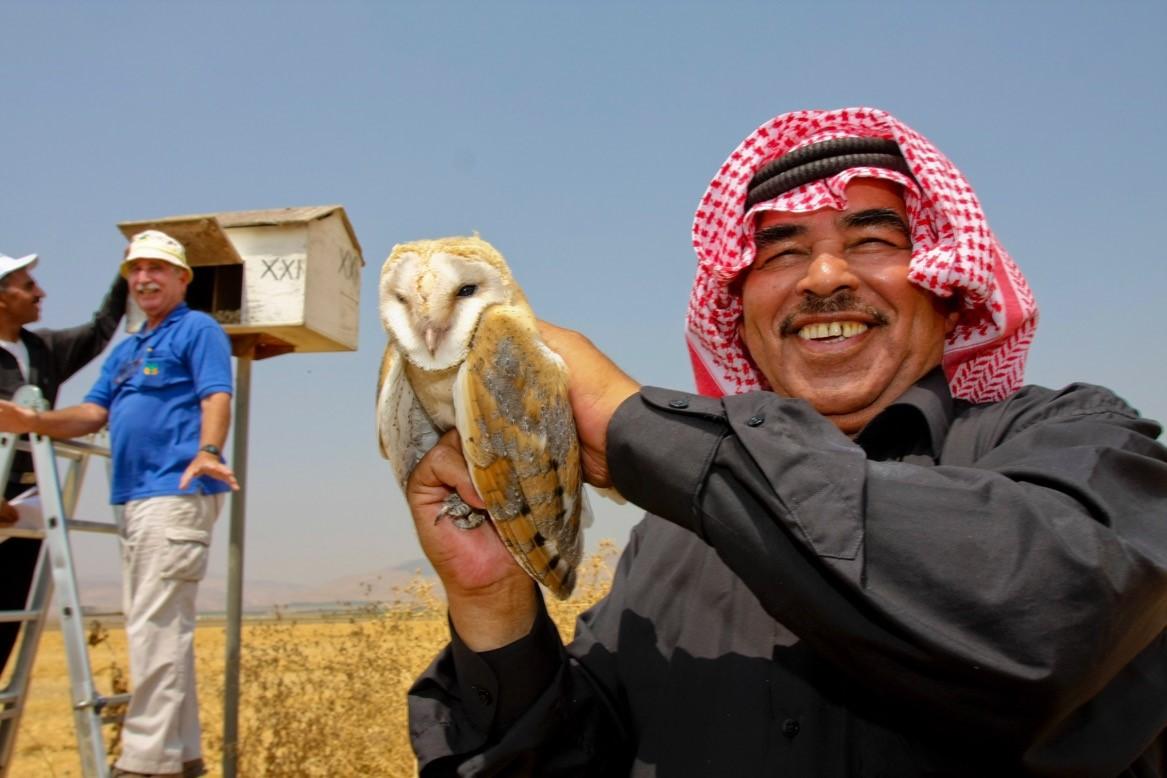
Science and diplomacy
Focusing on an ecological solution to a shared regional problem, Roulin says, is helping to transcend political, geographic, and religious barriers and foster connections between farmers in Israeli, Jordanian and Palestinian communities. He cites cross-border nest box-building workshops, including one where a morning of construction was followed by group tours of a Christian church, a Jewish synagogue, and a Muslim mosque in the Israeli city of Nazareth.
“These are things you never see on TV,” he says. “In the media, you always see the bad side of the region. For me as a Swiss, when you see all these people together you realise that peace is possible.”
In Israel and Jordan especially, interest in the use of science and conservation in diplomatic negotiations – known as scientific diplomacy – extends beyond owls.
“We want to have [the barn owl project] as a model for peace-building, to show that along a very long [Israeli] border of fighting, we can change the narrative,” says Baruch Spiegel, a senior advisor at the Tel Aviv-based Economic Cooperation Foundation (ECF) policy think tank.
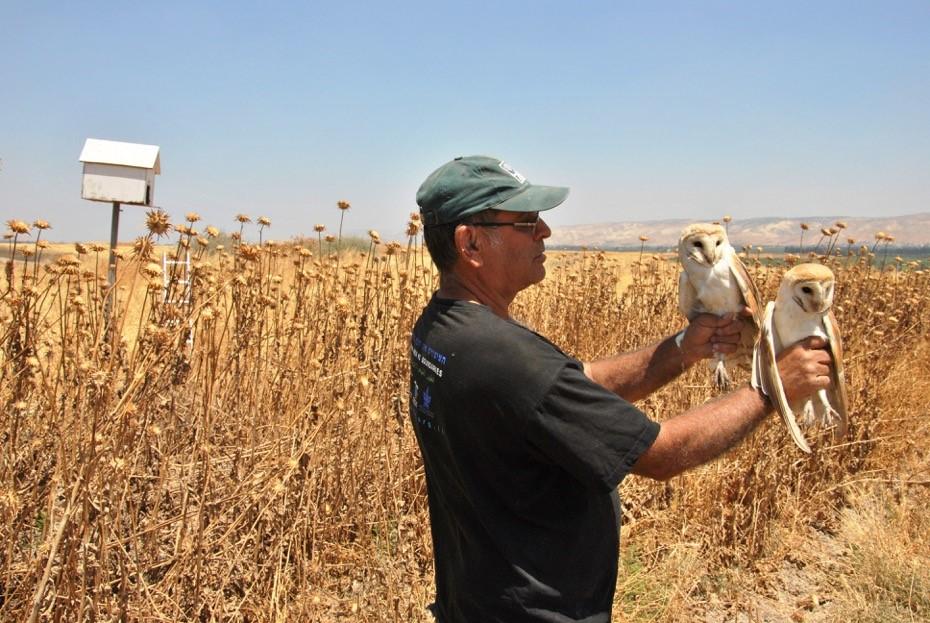
Spiegel and Abu Rashid – both of whom are retired military generals who helped negotiate the 1994 peace treaty between Israel and Jordan – presented the barn owl project along with Leshem and Roulin at the World Knowledge DialogueExternal link (WKD) conference in Villars-sur-Ollon, Switzerland on June 11. In addition to barn owls, they described other scientific diplomacy efforts in the Middle East involving bats, vultures, and even wolves [see box below].
Abu Rashid told swissinfo.ch that the participation of other countries like Switzerland in scientific diplomacy is key not only for financial support, but also to bring environmental expertise and education to the Middle East, where in some cultures for example, owls are seen as a bad omen.
Thanks to the nest box project, Abu Rashid says, he is already seeing evidence of greater environmental awareness in Jordan.
“We saw that in the Jordan Valley, when one of the kids found a dead barn owl in the street, and immediately went to show a field officer what happened. He was worried about that, and he wanted also to have a campaign against hunters who are hunting the birds,” he recalled.
For Roulin, the chance to dispel this stigma makes holding up the owl, rather than the dove, as a diplomatic emblem in the Middle East even more meaningful.
“This bird scares people, and in the Middle East, this is still strongly the case. And we use a bird that scares people to bring peace,” he says.
The 2018 World Knowledge Dialogue on the theme of migration – both in animal species and human societies – was held on June 11 in the Swiss mountain village of Villars-sur-Ollon, and organised by the Azur TriangleExternal link network comprising the Universities of Geneva, Lausanne and Neuchâtel, together with the Swiss Federal Institute of Technology in Lausanne (EPFL).
There, Baruch Spiegel and Mansour Abu Rashid spoke about how their respective countries of Israel and Jordan began working together on scientific diplomacy in the early 90s, on the cusp of a peace treaty between the two nations.
They relayed an anecdote from 1993, when a tracking collar worn by a wolf that was being studied by Israeli researchers turned up in Jordan. The collar was given to Jordanian military officers, who were worried that it had been used for espionage. Despite these concerns, Abu Rashid and Spiegel were able to negotiate the return of the collar to the Israelis. News of the exchange reached the Israeli prime minister at the time, Yitzhak Rabin, who then ordered the acceleration of peace efforts given what he perceived to be a promising sign of trust between the two countries.
“It started with a wolf, not with other big things…this was a first real element to convince both sides that something is moving,” Spiegel told the audience.

In compliance with the JTI standards
More: SWI swissinfo.ch certified by the Journalism Trust Initiative



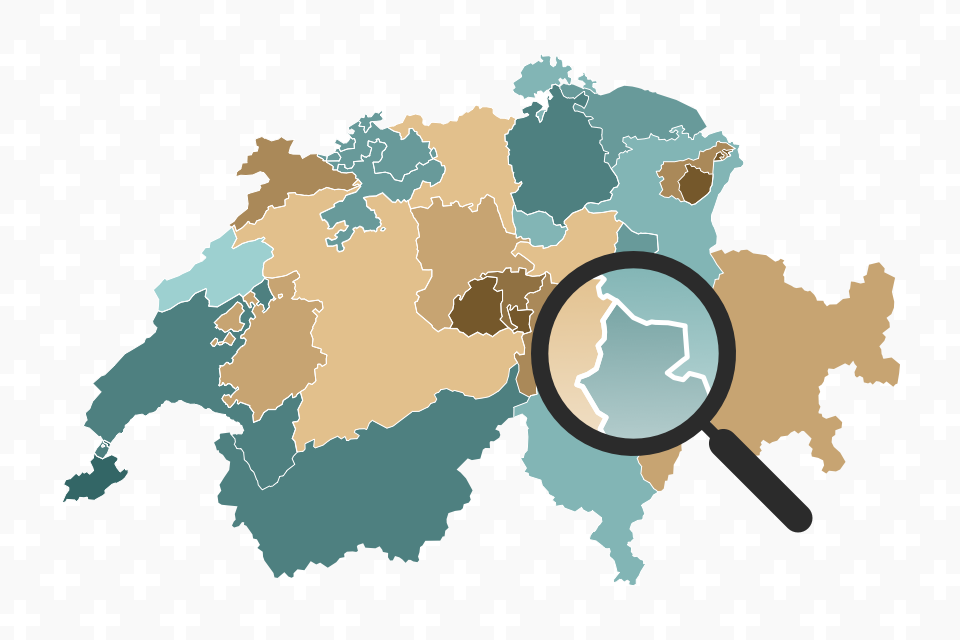











You can find an overview of ongoing debates with our journalists here . Please join us!
If you want to start a conversation about a topic raised in this article or want to report factual errors, email us at english@swissinfo.ch.